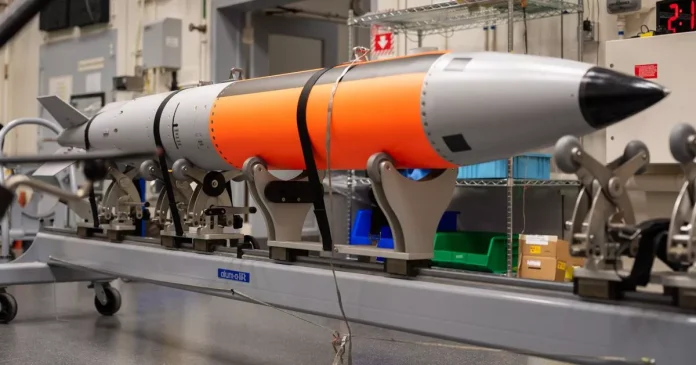The US has started making a nuclear bomb seven months before planned. The world-ending B61-13 nuclear weapon unit can carry a devastating 360-kiloton bomb, making it 24 times more powerful than the bomb that dropped on Hiroshima in 1945.
Nuclear weapons engineers Sandia National Laboratories have shown off assembly of the B61-13 unit and cited putting “an aggressive set of plans in motion” to expedite the project. They said: “Responding to a critical challenge and urgent need, the B61-13 program used innovative program planning that resulted in projected delivery seven months earlier than expected, a more than 25% decrease in overall time to first production unit.
“The B61-13 team reprioritised qualification activities, planned tests with U.S. Air Force stakeholders and jointly completed requirements with Los Alamos National Laboratory and NNSA (National Nuclear Security Administration).”
When the new bomb was announced in 2023, Assistant Secretary of Defense for Space Policy John Plumb said: “The United States has a responsibility to continue to assess and field the capabilities we need to credibly deter and, if necessary, respond to strategic attacks, and assure our allies.”
The NNSA allocated $92 million over four years for development, with original production expected to begin in fiscal year 2026. The bomb will be deployable by strategic aircraft such as the upcoming B-21 Raider stealth bomber and possibly the retiring B-2 Spirit.
Meanwhile, Britain is bolstering its own defences, taking it one step closer to developing its own homegrown hypersonic missile. Defence Secretary John Healey has unveiled a £1billion initiative, which will have the missile ready by 2030.
It comes after a series of critical propulsions tests – which pushed the missile’s engine’s capabilities to their limits – were successful, setting the stage for the UK to develop a game-changing weapon. Hypersonic weapons can travel five times the speed of sound and can evade the detection of existing missile defence systems. They fly at lower altitudes, making them incredibly difficult to detect.
The tests were carried out by the Defence Science and Technology Laboratory (Dstl), who were working with the US Air Force Research Laboratory (AFRL), and involved 223 successful propulsions tests over a six-week period at Virginia’s NASA Langley Research Centre.
The West and Russia are currently embroiled in aggressive posturing over military capabilities, with the fear that it could spill over with real world aggression, like the sort seen in Ukraine. The missile development represents a significant leap forward in UK military technology and the government’s commitment to bolstering the UK’s defences. It also comes as Russia continues to develop its own hypersonic missiles.
As The Mirror’s Defence and Security Editor I have covered war and terror at home and abroad for more than 20 years.
It has taken me to fascinating places such as Iraq, Syria, Afghanistan, Lebanon, elsewhere in the Middle East, across Africa and even Korea.
I have also spent months in Ukraine reporting on Russia’s invasion. If you want exclusive analysis, please sign up for my newsletter below.
At Reach and across our entities we and our partners use information collected through cookies and other identifiers from your device to improve experience on our site, analyse how it is used and to show personalised advertising. You can opt out of the sale or sharing of your data, at any time clicking the “Do Not Sell or Share my Data” button at the bottom of the webpage. Please note that your preferences are browser specific. Use of our website and any of our services represents your acceptance of the use of cookies and consent to the practices described in our Privacy Notice and Cookie Notice.


